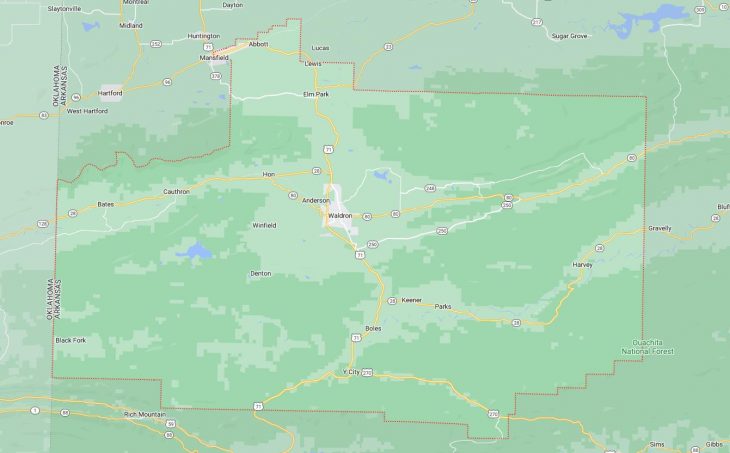Cities and Towns in Scott County, Arkansas
Founded on November 5, 1833, Scott County is one of 75 counties in the state of Arkansas. Historically, Scott County was formed from Crawford and Pope counties. The city of Waldron is the county seat. With FIPS code of 127, Scott County has a population of 9,822 and area of 898.09 square miles (2,326 km²).
List of all cities in Scott County, AR alphabetically
| City/Town | Postal Code | Area Code |
| Abbott, AR | 72944 | 479 |
| Bates, AR | 72958 | 479 |
| Boles, AR | 72926 | 479 |
| Harvey, AR | 72841 | 479 |
| Mansfield, AR | 72944 | 479 |
| Parks, AR | 72950 | 479 |
| Waldron, AR | 72958 | 479 |














































